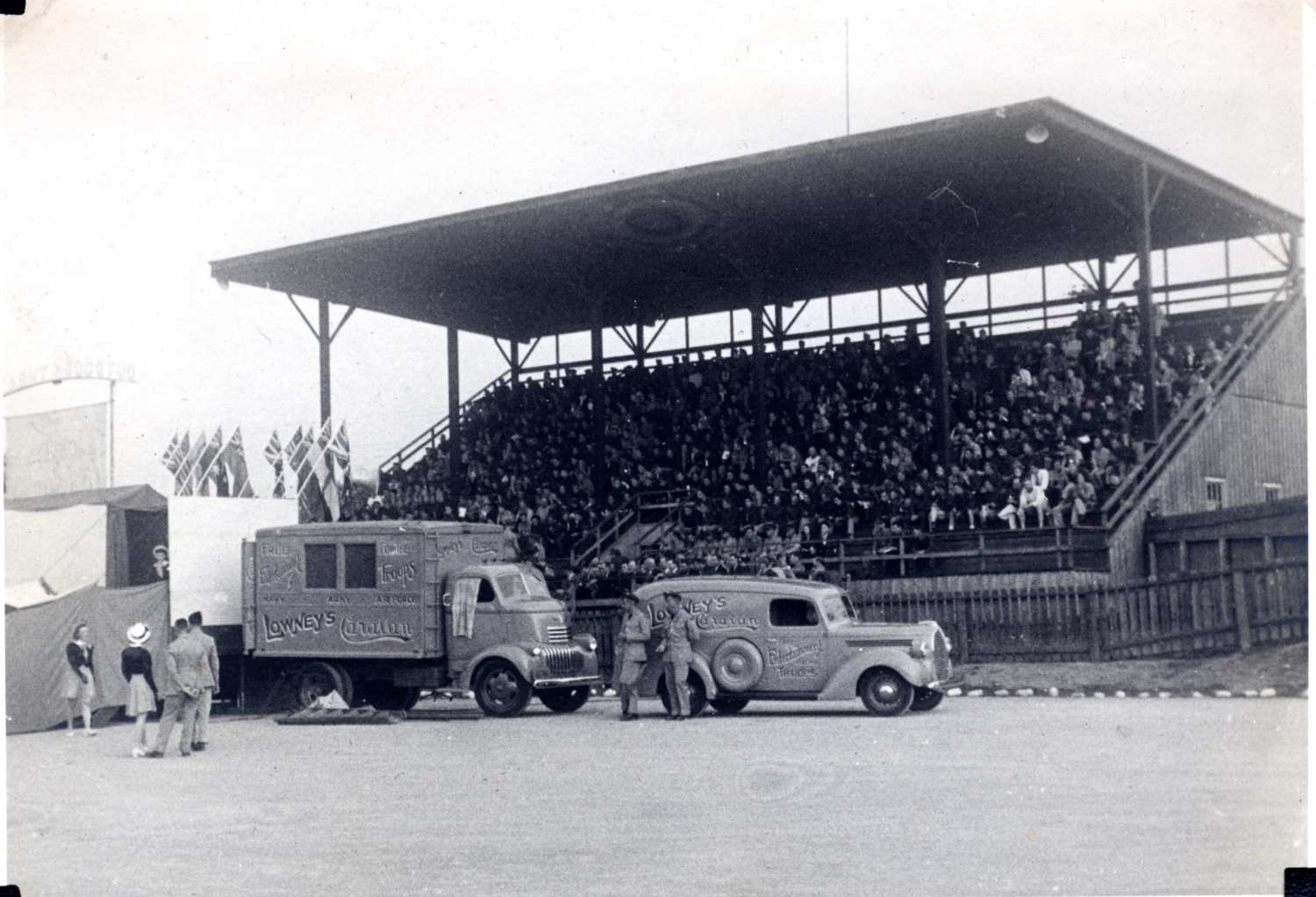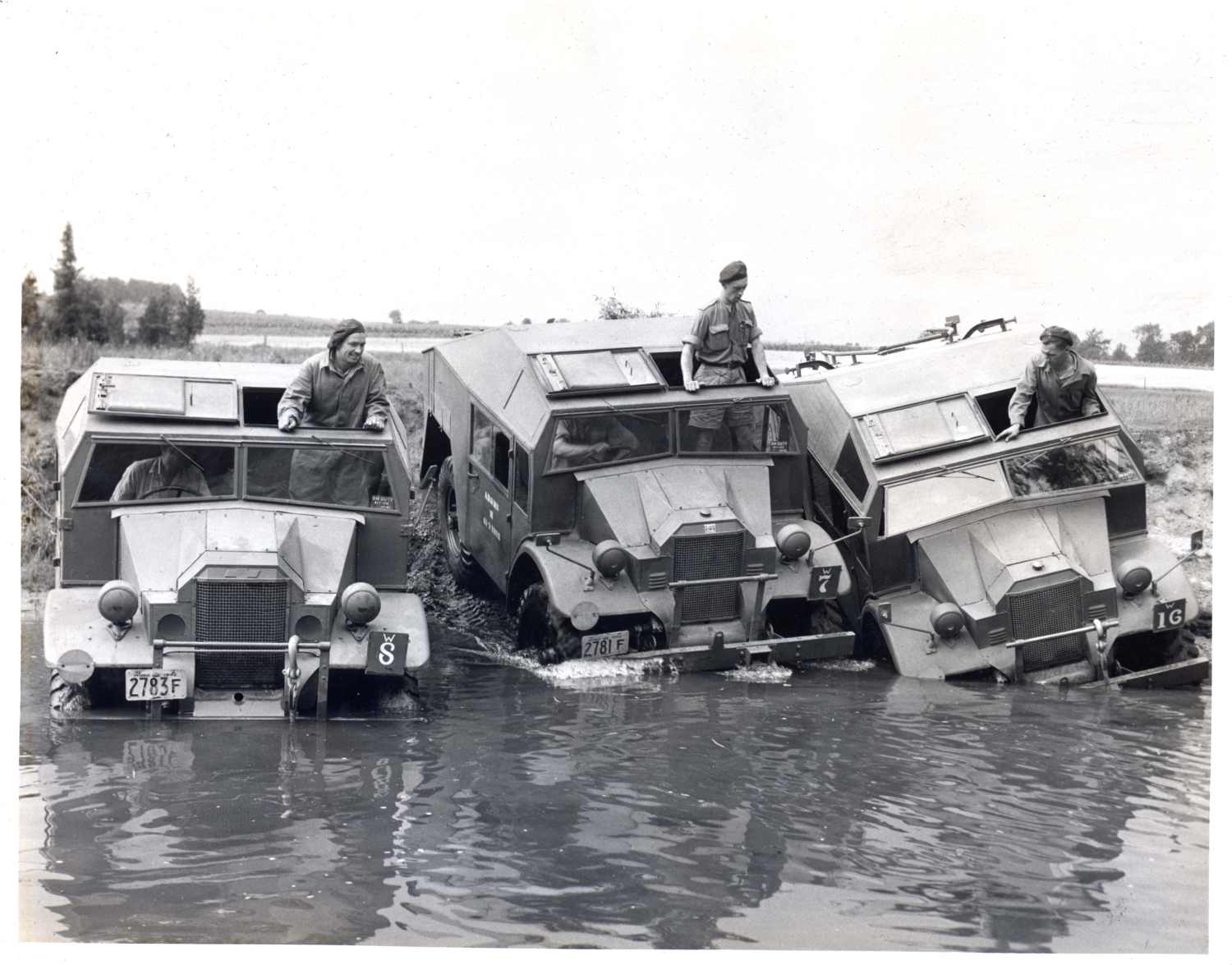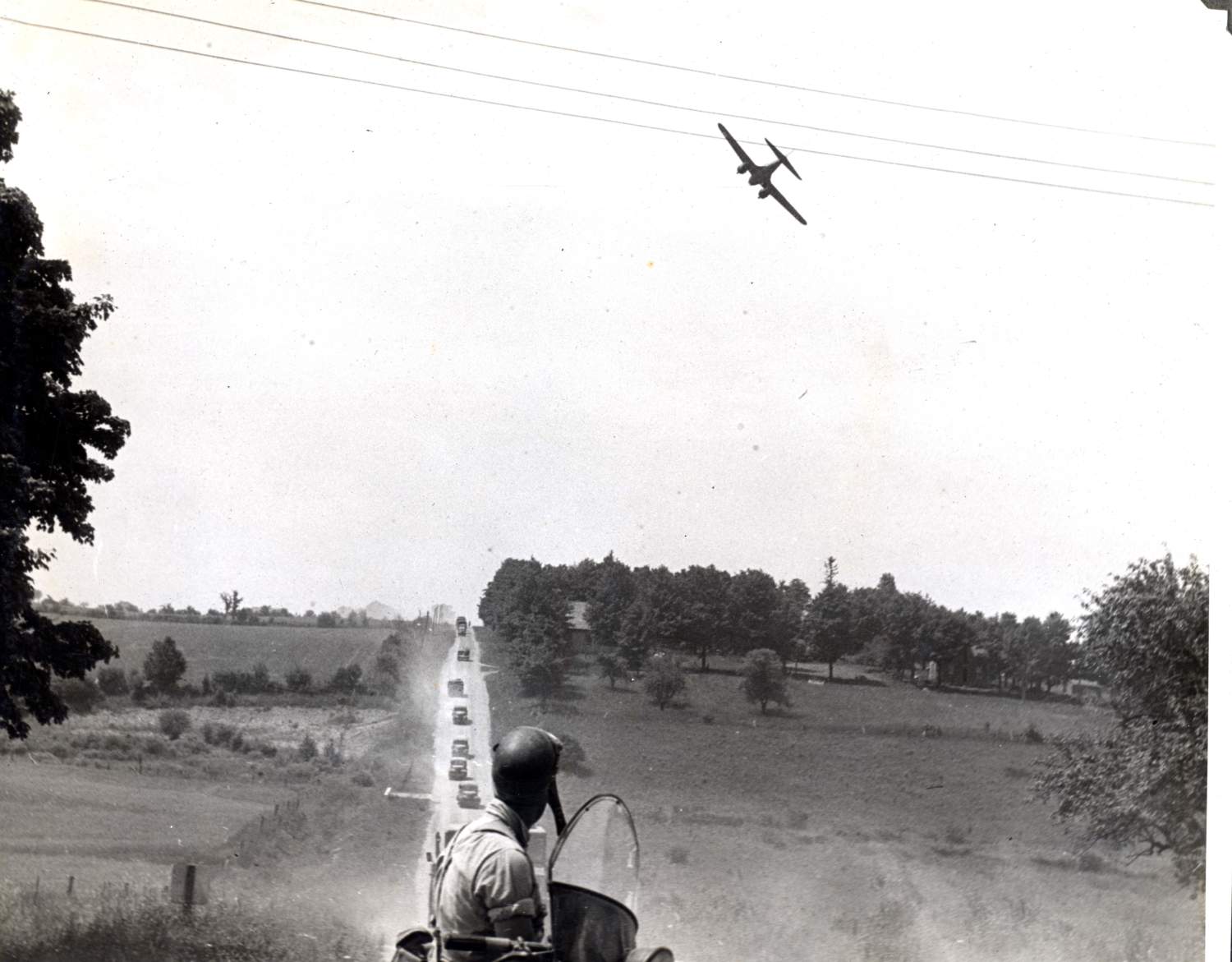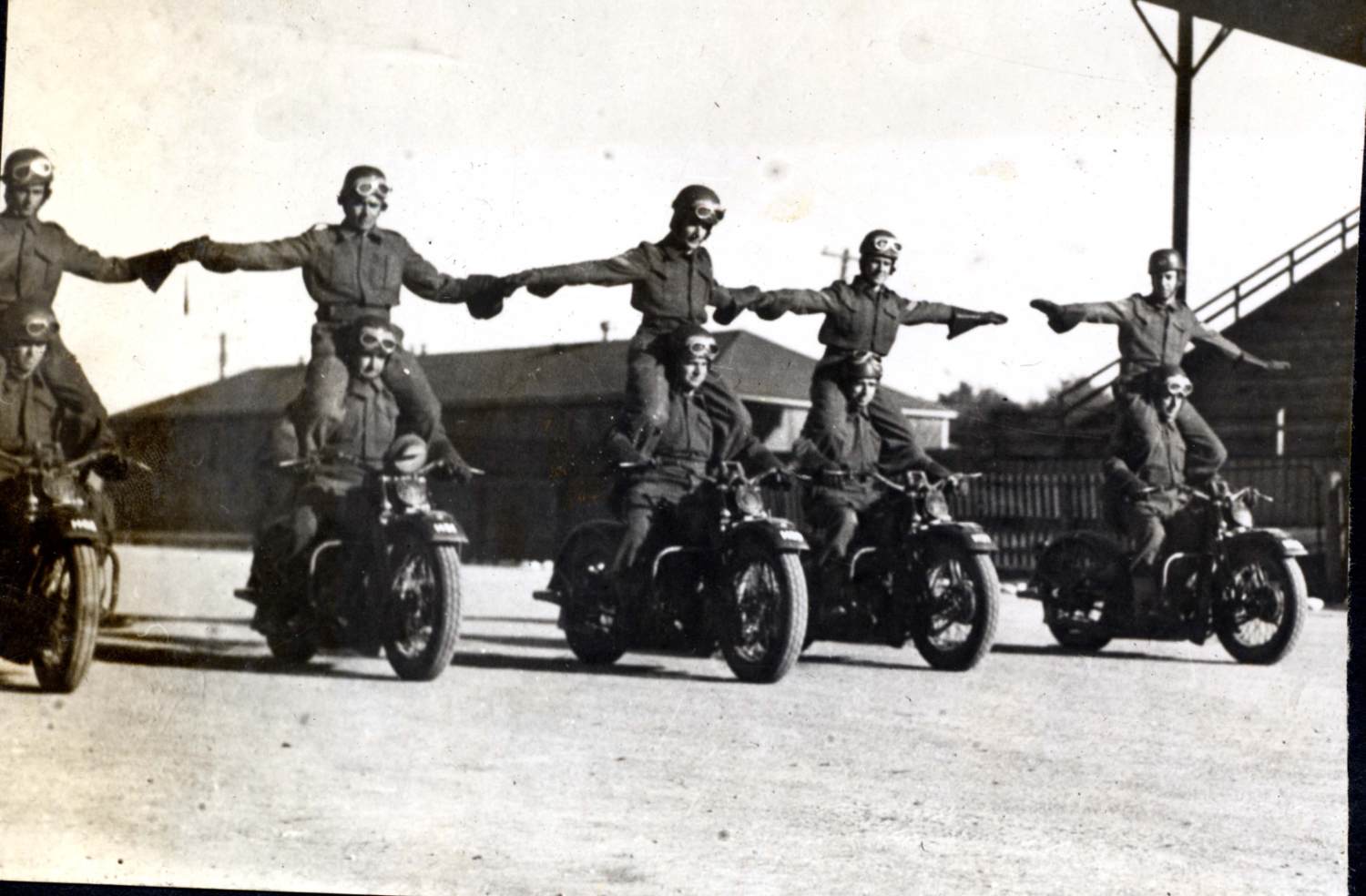Woodstock Advanced Driving and Maintenance School - WWII
Woodstock Advanced Driving and Maintenance School - WWII
By Liz Dommasch, Archivist
Construction on the Militia Training Camp at the Woodstock Fairgrounds began in September 1940 with A.J. McKinney in charge of carpentry and J.A. Vance as Contractor and Superintendent of Construction. Known as No. 11 Training Centre, it was officially opened in October 1940, with Lt.-Col. R.B. Crouch named as Commanding Officer.
The school included barracks, for trainees as well as officers, a kitchen and mess hall, lecture rooms and library, office space, quartermaster store, a rifle range, parade ground, mechanic shops, etc. The fairground and bandstand were converted to the parade ground for inspections, as well as social events for the men and the public. Such events included an all-star professional and amateur boxing show in June 1942 and the Lowney’s Caravan show presented by Lowney’s Young Canada Club in August of the same year.

The Lowney's Caravan at the Woodstock A.D.M.S.
Men were trained in driving and repairing military vehicles such as universal carriers, field artillery tractors (F.A.T.’s), motorcycles, trucks, etc. The School also had several training areas outside the city with conditions that were meant to reflect the landscape they would face in Europe including water, mud, gravel, hills, and forested area. Training Area No. 1 was located north of Eastwood; Training Area No. 2 included the A.F. Hamilton Gravel Pit; and Training Area No. 3 included the Hewitt Farm, 13th Line, William Dunn Gravel Pit and the McKay Bros. Farm (near Tollgate Side Road). Training Areas 2 & 3 were later expropriated by the Upper Thames River Conservation Authority and turned into the Pittock Conservation Area. The school also conducted two maneuver training exercises in the Bruce Peninsula in 1943 and 1944, as well as a simulated sea and airborne attack near Goderich in 1944.

Universal carriers being driven into the Thames River.

A convoy of military vehicles heading to training at the Bruce Peninsula.
On May 12, 1941, the camp officially became known as S-11 Advanced Driving and Maintenance School and in January 1943 it was renamed S-5 Canadian Driving and Maintenance School until 1946 when the camp closed. On October 9th, 1943 the school officially opened its sports field with a football game between the Western University Mustangs and the Hamilton Navy team. In August 1945 the school held its Civic Day Event, open to the public, with a number of sporting events including sprints, high jump, C.W.A.C. tire changing competition, and a three-legged race. Over the years, the school also conducted several “open house” events to benefit civilian recruiting and contributed to the Victory Loan Campaigns through parades and other fundraising opportunities. In November 1944 a mock execution of Hitler and Hirohito was held in front of the Woodstock City Hall as part of an event put on by the Canadian Driving and Maintenance School in support of the 7th Victory Loan Campaign.

Motorcycle training at the Woodstock Advanced Driving and Maintenance School.

Women changing a tire during a "sports day" event at the Woodstock A.D.M.S.
The school closed in March 1946 with the remaining personnel being transferred to Camp Ipperwash. Around 23,000 men passed through the school for training during its existence.
Image credits: COA93 Woodstock Training School, WWII fonds
